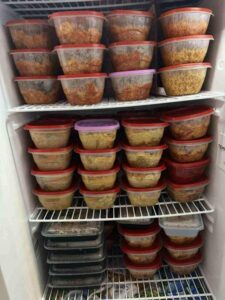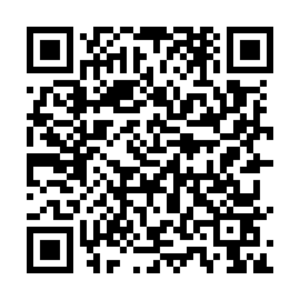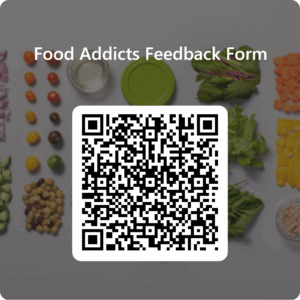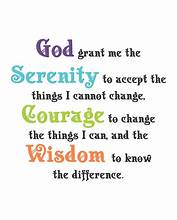Food Addiction – Renew. Refresh. Recover.
August 2025 Edition
“Emotional Sobriety – Because it’s not just about the food.”
A Note From Your Editor
Let’s get real. Abstinence is about way more than what’s on your plate. Food addiction is a two-fold disease. It’s a physical allergy/genetic predisposition and a mental obsession that results in a spiritual malady. Once the fog lifts and the food obsession fades even just a little, the real work begins. And for many of us that work is emotional sobriety.
Stabilizing with a solid food plan is the foundation. From there, we can begin working the Steps to uncover old patterns, limiting beliefs, and self-destructive behaviors. Time is our greatest healer. The longer we stay focused on recovery, the more we grow, not just into stability, but into a life that feels exciting, valuable and deeply free.
This month we’ll explore what it means to heal beyond the food and why that healing is where true freedom lives.
Recovery Radar – Emotional Sobriety
What is Emotional Sobriety? It is the ability to be in control and stay centered. It is the moment you realize you can sit with sadness without self-destructing, experience anger without doing harm to yourself or others, or feel joy without fear. It is learning to live in your body without trying to numb or escape.
Emotional sobriety is the ability to recognize what’s real and what’s been distorted by the disease (something I personally am still working hard on and use my sponsor as a sounding board to help me get clarity when I’m unable to).
It’s being able to tell the difference between:
- A true emergency vs. an emotional overreaction masked by old coping mechanisms
- A hard day vs. a relapse excuse
- A tough feeling vs. an addictive craving disguised as a need
It is the ability to stay grounded when life gets loud.
It is what we’re really chasing when we say we want peace. Not just physical abstinence but emotional presence.
When we stabilize with our food plan, we begin to clear the fog (this process can be quite emotional and painful) physically, mentally and perhaps most important; spiritually. From there, emotional sobriety becomes possible. It’s a daily practice of pausing, noticing, and CHOOSING something different (which frankly is VERY uncomfortable to do). It’s the journey of learning to respond instead of react.
How Do I Achieve Emotional Sobriety?
Emotional sobriety doesn’t happen all at once — it’s something we grow into by showing up for our recovery one day at a time. Here’s how we do it:
A. Stabilize Physically
Start by following your food plan consistently. This helps calm the physical allergy and clears the mental fog so you can begin to feel again — safely and clearly.
B. Work our plan (the 12 Steps and showing up to meetings/being active in the community)
The Twelve Steps are a spiritual and emotional roadmap. Here are the ones that especially support emotional sobriety:
Step 1: Acceptance of powerlessness — over food and over emotional reactions.
Step 2: Belief that a higher power can restore — emotional sanity becomes possible.
Step 3: Turning over control — we stop trying to manage everything alone.
Step 4: Inventory — we name our patterns, fears, and wounds.
Step 5: Sharing our truth — we release shame and start to connect.
Step 6 & 7: Surrender and humility — we invite transformation.
Step 10: Ongoing self-awareness — we course-correct in real time.
Step 11: Conscious contact — prayer and meditation become emotional anchors.
C. Use the Tools
We created specific worksheets to support your emotional healing through practical, daily action:
- Boundaries Reboot Worksheet.docx Helps you set safe limits and identify when you’re abandoning yourself (Step 4 and Step 10)
- Daily Emotional Check In Sheet.docx Use this to name what you’re feeling without judgment (Step 11 and emotional grounding)
- Trigger Log Food Free Reflection.docx A powerful way to unpack what’s really going on when emotions get loud (Steps 4–6)
These tools help turn the abstract idea of “emotional sobriety” into a daily, tangible practice.
D. Stay Connected & Give It Time
This healing doesn’t happen in isolation. Set a goal to attend a minimum of two meetings a week (3 is ideal). Share with a sponsor. Work on building friendships/relationships with others in recovery. Let yourself be seen in safe spaces (don’t set yourself up for failure by engaging in risky behaviors that you know may lead to relapse. This can be different for everyone, ask other fellow FAB members what there’s are to learn and start eliminating risks early on).
And most of all, trust the process. The longer you stay abstinent, attend meetings, work the Steps, and use the tools, the more grounded you’ll feel. You don’t have to do it perfectly. You just have to keep doing it. It will be emotional, and you may find yourself feeling feelings you can’t even articulate or know where they’re coming from. Might freak you out. That’s okay. Everyone has their own way they experience this process and there is no “right” or “wrong” way to feel or experience it. It’s YOUR healing journey.
“My feelings are valid, but they don’t have to lead me. I can pause, breathe, and choose again.”
Healing Highlights Through The 12 Steps
Step Ten: Continued to take personal inventory and when we were wrong promptly admitted it
This step is the maintenance plan for emotional sobriety.
Feeling something does not mean you’re failing. It means you’re alive. And working this step with integrity keeps you aligned with your healing.
Affirmation:
“My feelings are valid but they don’t have to lead me. I can pause, breathe, and choose again.”
Member Spotlight: Monthly Mirror Reflection
Delania’s Food Prep Perfections!
(Thank you for your contribution and Service Delania)
The Power of Food Prep: How Meal Planning Keeps Me Sane, Satisfied, and Abstinent As a full-time nurse working 12-hour shifts with a one-hour commute each way, there’s one thing I know for certain: I wouldn’t survive my program—or stay abstinent from trigger foods—without food prep. Meal prep isn’t just a helpful habit. It’s my lifeline.
Every four months, I dedicate a full day or two to preparing approximately 60 soups—yes, 60! I rotate through three different kinds: hearty chicken and rice, comforting chili, and a nourishing abstinent spaghetti. These meals are fully compliant with my program and provide me with nourishing, ready-to-eat options that I can count on during busy weeks. I also prepare around 45 breakfasts that set my day up for success.
Favorites include blueberry muffins, chicken and sweet potato bake, and turkey pineapple bake. These grab-and-go options keep me fueled and focused during my long shifts. Every week, I make 7 stir-fry meals—these are my weekday lunches. I mix up the meats (chicken, ground turkey, ground chicken) to keep things flavorful and interesting. I always keep pre-portioned bags of protein in my freezer to make this part easy and efficient. Here’s what my weekday food routine looks like:
- Breakfast: One of my pre-prepped meals
- Lunch: A homemade stir-fry
- Dinner: One of my frozen soups
These preplanned daily meals keep me on track, physically nourished, and emotionally steady. I don’t waste time wondering what I’ll eat or trying to resist the temptation of less healthy options. Everything is ready to go. On my days off, I don’t touch my pre-made soups or breakfasts. I use those days to follow a different, but still preplanned, meal plan that allows for more variety while staying abstinent. Being prepared gives me freedom. It protects my recovery. It supports my schedule. And most importantly—it keeps me from falling into old patterns. Meal prep isn’t a chore. It’s an act of self-care. And it’s the reason I can show up for my job, my health, and my life fully and faithfully every single day.
Imperfectly in fellowship,
Delania – a fellow food addict
Freedom in Action: Recipes, Routines & Real-Life Tools
Delania’s Turkey and Pineapple Breakfast Bake Recipe:
- 4 oz cooked ground turkey
- 1 c cooked brown/wild rice
- 6 oz pineapple
- 1 egg
- 1 Tsp of either clean pumpkin pie spice or clean apple pie spice
Get a pie pan and use olive oil to spray the pan lightly. Mix all ingredients together and bake at 375 for approximately 35 minutes (bake until it’s firm).
Support what supports YOU
At FAB, we believe in the community, not just the kind that helps you stay abstinent, but the kind that reminds you you’re not alone. This digital newsletter, the stories, the resources, the reminders, it’s all made possible by people like you.
If FAB has ever helped you feel seen, heard, or understood…
If you’ve ever read something here that kept you going that day…
If you’ve ever said, “Yes, these are my people”…
Then consider being part of what keeps it going.
We’re 100% community funded. Based on our analytical estimates, if every member of the group contributed $3 per newsletter, that would fully fund the newsletter and make it 100% sustainable.
Every single donation is a way of saying, “This matters.”
It’s not about the amount. It’s about the heart behind it.
You’re not just donating to a newsletter, you’re investing in your recovery, in someone else’s breakthrough, in the community that’s walking this road with you.
Contribute to your recovery and the recovery of others: PAYPAL LINK or use the QR code below:
Thank you for being part of this. We’re here because of each other.
Interactive Corner – Connect with Us: Facebook Group
Website: fabfreedom.com
Want to contribute a story or suggestion? Submit it here: Your Voice Matters Form or use the QR code below:
We are not Alone. Together, we can unite to treat food addiction one day at a time.




